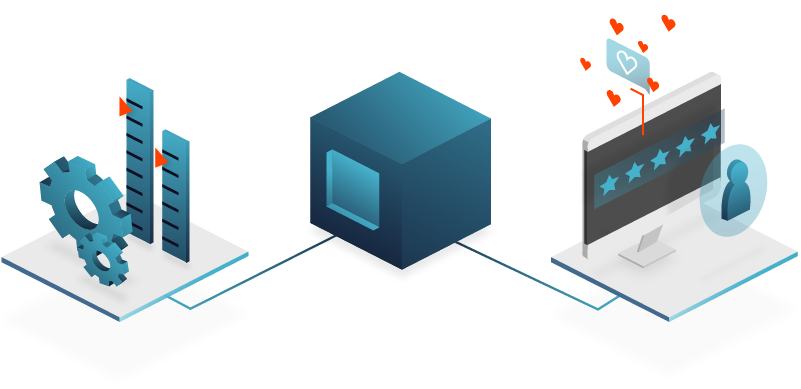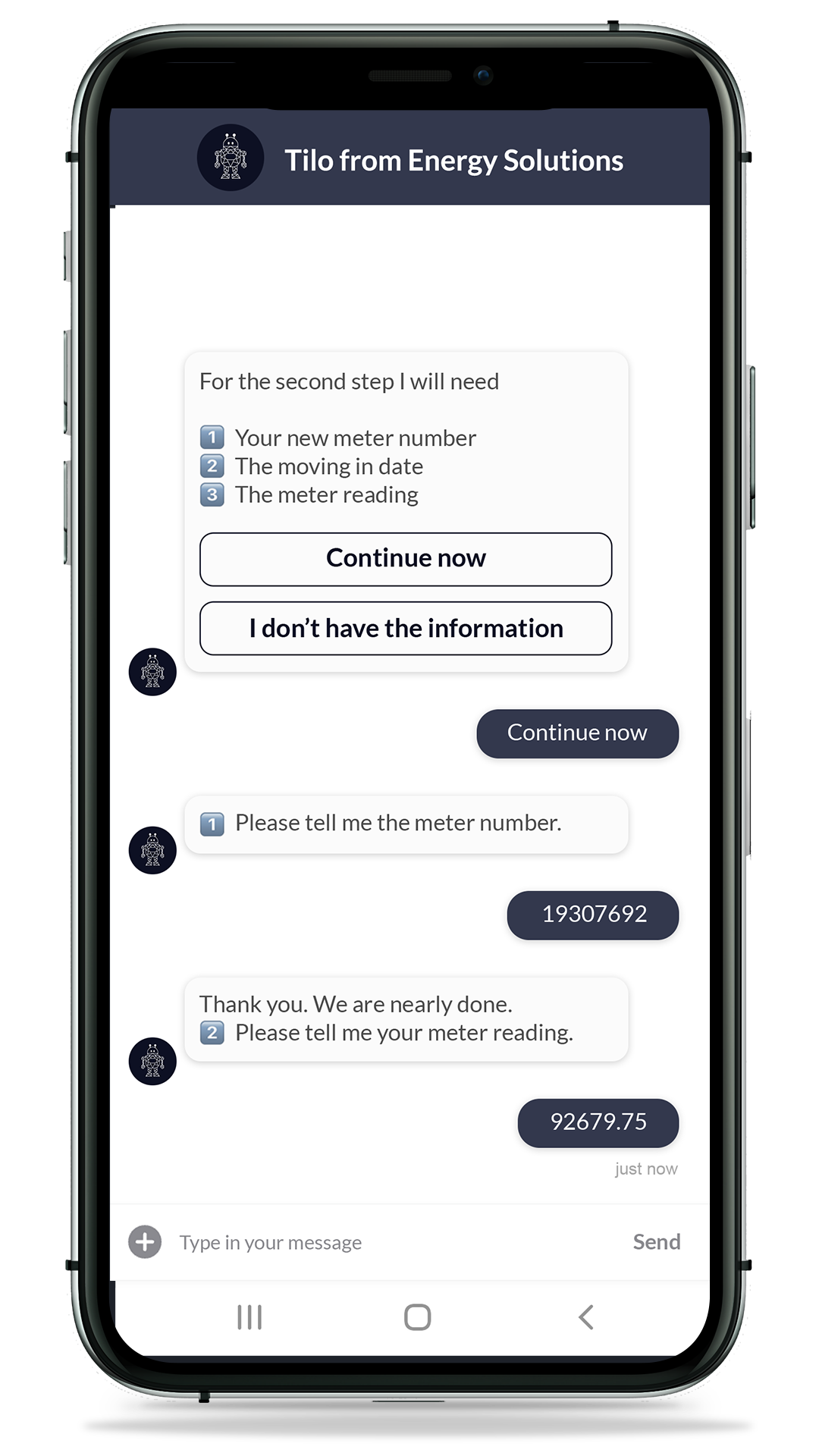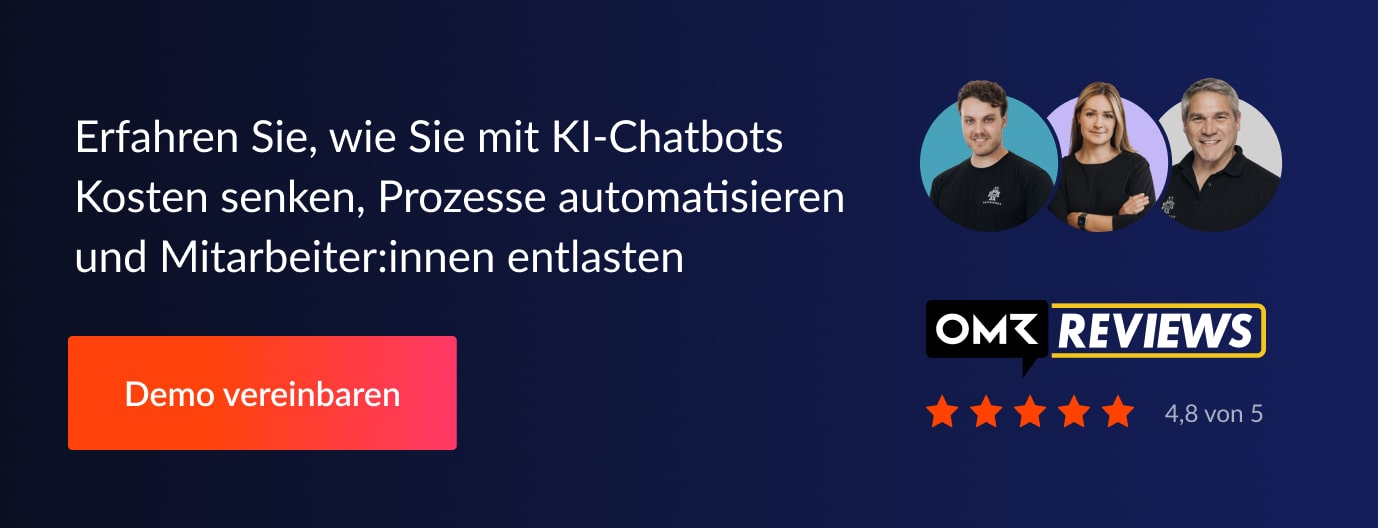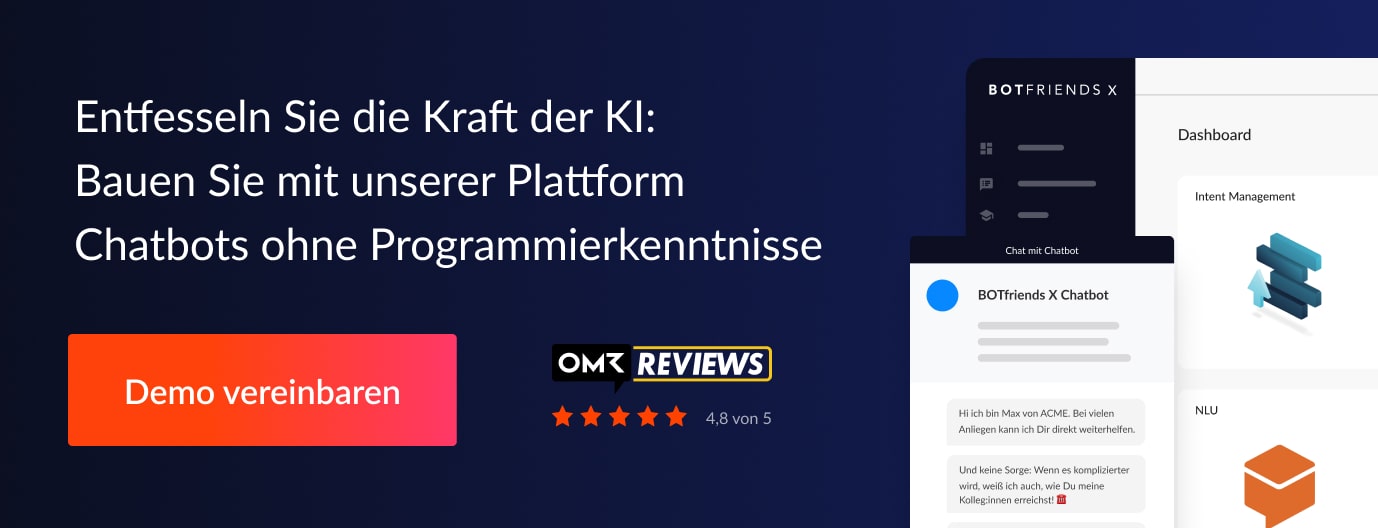"81.9% of buyers consider the use of e-tools in procurement to be necessary. But only 30% of purchasing departments actively use them." (Procurement Barometer 2020)
Where does this gap come from? And how can companies benefit if they consistently digitalize and implement automation of procurement processes?
In this guide, we'll take a closer look,
- How purchasing can benefit from digitalization and automation
- The state of digitalization in purchasing is
- what hinders an introduction of this
- Opportunities in digitalizing and automating processes
Use the buttons to jump to the individual parts of the guide.
Where does this gap come from? And how can companies benefit if they consistently digitalize and implement automation of procurement processes?
In this guide, we want to take a closer look at:
- How purchasing can benefit from digitalization and automation
- The state of digitalization in purchasing is
- what hinders an introduction of this
- Opportunities in digitalizing and automating processes
What is Procurement 4.0?
What is Procurement 4.0?
What advantages do digitalized and automated procurement processes offer purchasing?
Consistent digitization can standardize and accelerate procurement processes. This significantly reduces the effort for buyers and the process costs for companies. According to a study by HTWK Leipzig, buyers can save up to 53 min in processing of an internal order through the use of e-tools.
Minutes less working time for an internal order through digitization (HTWK Leipzig)
In addition, transparency in procurement increases through uniform or cross-functional solutions: From the creation of an order to payment processing, all processes can be monitored.
The information obtained at various stages in the processes is directly available digitally. This not only reduces input and transmission errors. It is also easier for purchasing to use clean and comprehensive data for decision-making.
Digitalization is the prerequisite for automating processes and communication. For the use of RPA and virtual AI assistants, data must be digitized and interfaces (APIs) must be available.
Automated processes in procurement can reduce the workload of employees enormously.
Depending on the level of automation chosen by the company, processes such as requesting quotations only have to be triggered by employees or run completely autonomously. Repetitive questions - such as supplier queries about invoice status - can also be answered automatically.
In this way, buyers gain free time they can use for more demanding topics, such as strategy or negotiations.
However, automation and digitization can also directly realize savings potential: With negotiation bots, for example, it is possible to negotiate tail spend offers in an automated manner, and through guided buying it is possible to Maverick Buying be curbed.
What is the status quo in procurement?
What is the status quo in procurement?
What is the state of purchasing departments in regards of digitalization?
For the BME Barometer "Electronic Procurement", companies in DACH were surveyed on the status of digitization in their purchasing departments.
On the question of whether the use of electronic tools is necessary, the respondents are unanimous. On average, 81.9% of respondents are in favor of using e-tools.
But not all companies having recognized the need, have already implemented the use of e-tools in their company.
Only 48% on average already have e-tools for purchasing. 52% of companies are still thinking about to use or introduce them.


The proportion of companies where e-tools have been introduced but are hardly used or not used at all, is very interesting (see figure above).
On average, 13% of companies have invested in new technologies, made the effort to introduce them into the company and integrate them into existing processes but does not use them.
On average, 13% of companies have invested in new technologies but does not use them.
And even among the companies actively using e-tools, the intensity of use varies widely:


Only an average of 23.41% companies work exclusively digitally in the various areas of procurement. And there is a large discrepancy between the desired intensity of use and actual use, too.
For example, 71.4% of companies would like to handle their source-to-contract activities "exclusively electronically" or "electronically, with a few exceptions". However, this has so far only been achieved by 52.1% of companies.
Why is that?
Why is there such gap twice between the number of companies wanting to digitalize and automate their purchasing and those that have actually already implemented it? And if the e-tools are available, why are they not being used across the board?
What is holding back digitization in procurement?
What is holding back digitization in procurement?
What prevents the introduction of automated and digitalized processes in procurement?
The obstacles vary widely. Here, we list some of them:
Internal reasons
Technical circumstances are often insufficient. A lack of data structuring often prevents processes from being digitalized and automated.
In other cases, the cost of software or services is too high when the procurement volume is low.
For one third each, data protection concerns and obstructive legislation are relevant. This is further supported by the fact that 26.1% are not convinced they can trust suppliers to maintain confidentiality.
External reasons
Suppliers of 31.5% of the companies refused a cooperation. Prof. Dr. Holger Müller from the Leipzig University of Applied Sciences cites one possible reason for this:
The respondents from industrial companies rate the respective relevance of the use of e-tools higher than the service providers across almost all categories.
Human factor
If companies want to digitalize purchasing, they should not underestimate the human factor:
A lack of qualifications (22.2%) and understanding or knowledge of the opportunities offered by automation or digitization among employees (34.8%) can put the brakes on digitization measures in the long term. Furthermore, if there is insufficient support from management - which is the case for 40.9% of companies - then digitalization measures are often doomed to failure.
What does this mean for purchasing departments?
What does this mean for purchasing departments?
One thing is obvious: Purchasing departments are aware of the need for digitalization and automation of procurement processes. However, it is not only the introduction of e-tools lagging behind. Even when they are available, they are not used as intensively as those responsible would like. In both cases, there are technical, structural and human reasons.
How can buyers select the right technologies and implement them in their existing processes to realize the full potential of Procurement 4.0?
Two aspects are very important here:


Flexibility of e-tools
The state of digitalization often varies greatly within individual companies and between ones that cooperate with each other. It is therefore important to select technologies that can be flexibly adapted to existing processes and conditions. In addition, they should offer the possibility for external users to use them without having to implement new technologies themselves. In this way, companies are not dependent on business partners such as suppliers being at the same level of digitalization.
User:inside friendliness
Many companies have already introduced e-tools, but they are not used intensively. One reason for this is that they are often not user:friendly. Therefore, when selecting them, care should be taken to ensure that they can be used easily and without much prior knowledge.
What are the possibilities for digitization and automation?
What are the possibilities for digitization and automation?
What software is already being used in procurement for digitalization and automation?
Digital work tools that lead to a general reduction in workload but are not specific to purchasing are already being used.
This is complemented by procurement platforms and software for analyzing and visualizing data. These are already used by one in three companies.
Technologies for automation and artificial intelligence are used much less, yet. Only one in ten companies uses robotics process automation.
Virtual AI assistants and chatbots are not widely used, yet. These are an established tool in just 4% of purchasing departments.
However, more and more companies are venturing into the new technology:
40% of purchasing departments are currently testing chatbots as a way to relieve employees and automate processes.
RPA is also one of the technologies currently being tested by every second company. Departments are looking for ways to make better use of the data available to them.
In order to be able to analyze data and use it for decision-making, it must be available in a clean and digitized form. Virtual AI assistants are one way of accepting information from users and storing it directly in the correct digitized form.
Virtual AI assistants and chatbots in procurement
Virtual AI assistants and chatbots in procurement
What are virtual AI assistants and how do they work?
Virtual AI assistants are chatbots or voice assistants. They can answer questions, gather information, and guide users through processes.
The exchange with the chatbot happens in text form. The users writes an individual text to the chatbot or clicks on so-called quick replies. Answers to frequently asked questions or categories are provided by the chatbot.
The virtual AI assistant can reply with text, images and videos. It can also forward the user to a specific page via links.


How do digital AI assistants know what users want from them?
The chatbots process and analyze text input using natural language processing services and machine learning. Therefore, it makes no difference whether employees ask "When will my order arrive?" or "Where is my order?". The virtual AI assistants can recognize the user's intention regardless of the wording and respond accordingly.
To find answers, they access information in databases and other systems such as SAP or procurement platforms. All they need is a connection to the systems via interfaces (API).
They can transfer information and data to the systems via these interfaces. For example, also supplier onboarding can be handled by a chatbot and the supplier's entries are stored directly in the system.
Virtual AI assistants can be used for:
Answering questions
Virtual AI assistants can greatly reduce the workload of buyers by relieving them of answering repetitive standard queries. Whether it's questions from employees about creating a BANF or queries from suppliers about the status of an invoice, a chatbot answers automatically and in real time. This can accelerate work processes, because employees are provided with the necessary information immediately and without much effort.
Guided Buying
Placing orders in compliance with guidelines is not always easy. Especially for employees from other departments. So it often happens that they Maverick Buying and order past the purchasing department. A virtual AI assistant guides users through the ordering process and ensures that all requirements are met. In this way, Guided Buying can reduce the financial damage caused by wild purchasing.
Approval processes
When orders from employees exceed a certain value, they need approval. This can be obtained conveniently via the virtual AI assistant. Based on the amount of the order, the chatbot recognizes that approval is required and independently contacts the responsible buyer. As soon as approval has been obtained, the chatbot initiates the order.
Acceptance of documents
When documents such as invoices are sent to purchasing departments by e-mail, employees have a lot of manual work to do. A virtual AI assistant can accept them, extract relevant information with the help of RPA and store them in the system. This significantly reduces the time required.
Supplier:inside onboarding
Another use case for virtual AI assistants is the onboarding of new suppliers. The relevant information is requested by the chatbot as in a conversation. Necessary certificates can also be uploaded directly via the chatbot. If these are not directly available, it can send the supplier a reminder.
Supplier:interior communication
Not only the onboarding, but also other parts of the following communication can be handled by the chatbot. These include open questions, such as the status of an invoice, which can be answered by the chatbot.
Obtain offers
A virtual AI assistant can relieve the burden on buyers by taking over the Obtaining offers takes over. To do this, the chatbot contacts suppliers, informs them about the desired delivery and asks whether the company would like to submit an offer.
Negotiate prices
In many companies, tail spend offers are not negotiated because the effort is too great. With a chatbot, this can be done automatically and thus costs can be saved in indirect purchasing.
Renegotiate annual prices
It is also possible to conduct annual price negotiations with suppliers. The chatbot negotiates the corresponding discounted prices for products, valid for the entire year. Thus, costs for POVs (Purchase Order Volumes) can be reduced.
Answering questions
Virtual AI assistants can greatly reduce the workload of buyers by relieving them of answering repetitive standard queries. Whether it's questions from employees about creating a BANF or queries from suppliers about the status of an invoice, a chatbot answers automatically and in real time. This can accelerate work processes, because employees are provided with the necessary information immediately and without much effort.
Guided Buying
Placing orders in compliance with guidelines is not always easy. Especially for employees from other departments. It often happens that they engage in maverick buying and order past the purchasing department. A virtual AI assistant guides users through the ordering process and ensures that all requirements are met. In this way, Guided Buying can reduce the financial damage caused by maverick buying.
Approval processes
When orders from employees exceed a certain value, they need approval. This can be obtained conveniently via the virtual AI assistant. Based on the amount of the order, the chatbot recognizes that approval is required and independently contacts the responsible buyer. As soon as approval has been obtained, the chatbot initiates the order.
Acceptance of documents
When documents such as invoices are sent to purchasing departments by e-mail, employees have a lot of manual work to do. A virtual AI assistant can accept them, extract relevant information with the help of RPA and store them in the system. This significantly reduces the time required.
Supplier:inside onboarding
Another use case for virtual AI assistants is the onboarding of new suppliers. The relevant information is requested by the chatbot as in a conversation. Necessary certificates can also be uploaded directly via the chatbot. If these are not directly available, it can send the supplier a reminder.
Supplier:interior communication
Not only onboarding, but also other parts of the subsequent communication can be handled by the chatbot. These include open questions, such as the status of an invoice, which can be answered by the chatbot.
Obtain offers
A virtual AI assistant can relieve the burden on buyers by taking over the Obtaining offers takes over. To do this, the chatbot contacts suppliers, informs them about the desired delivery and asks whether the company would like to submit an offer.
Negotiate prices
In many companies, tail spend offers are not negotiated because the effort is too great. With a chatbot, this can be done automatically and thus costs can be saved in indirect purchasing.
Renegotiate annual prices
It is also possible to conduct annual price negotiations with suppliers. The chatbot negotiates the corresponding discounted prices for products, valid for the entire year. Thus, costs for POVs (Purchase Order Volumes) can be reduced.
E-procurement platforms
E-procurement platforms
What types of e-procurement platforms exists?
There are three different types of e-procurement platforms:
Supplier:interior systems
Supplier systems, as the name suggests, are provided by the suppliers. Since they naturally have an interest in ensuring that as many customers as possible use the system, they strive to keep the hardware and software requirements for users as low as possible.
For purchasing departments, these sell-side systems have the major disadvantage that price comparisons is not possibly directly on the portal, as only the products of a single supplier are presented.
Procurement systems
In procurement systems, a single company or several companies together can define the processes and framework conditions to which the suppliers must adhere. An advantage is that the processes can be better adapted to one's own enterprise.
The external catalogs of the suppliers can be entered into the ERP system via a desktop purchasing system, for example. Employees can place their orders via an open catalog interface or a virtual AI assistant.
Electronic marketplace
This is a system is provided by a third party that can be used by buyers and suppliers for a fee. The advantage of such a system is that purchasing departments can easily compare different offers.
A connection to one's own system is done via standardized interfaces.
What can e-procurement platforms do?
Depending on the type and scope of services, e-procurement platforms can map paper-based processes in a fully digitalized way. These include offer management, approval process, transaction and tracking, payment, and reporting.
How can virtual AI assistants and e-procurement platforms be combined?
Not all e-procurement platforms are easy to use. Some offer very good spend analysis, have implemented approval workflows, or have very good supplier management - but placing orders, for example, is still difficult for employees from other departments.
In such cases, it is not necessary to switch completely to another platform. Instead, a guided buying function can be offered to employees via a virtual assistant. By doing this, the company can retain the already established platform and functioning processes.
The same applies if companies are not looking for an all-in-one solution. Perhaps they are only missing a partial solution, such as a tool for more efficient supplier onboarding. This can be done exclusively via a virtual AI assistant.
Since chatbots only need an API to be connected and integrated into a system, they can be used flexibly as a helpful supplement to existing e-procurement platforms.
Robotic Process Automation
Robotic Process Automation
What is Robotic Process Automation (RPA)?
RPA involves mimicking a human interaction with user:inside interfaces of software systems.
A user:inside interface is the place where a human interacts with a machine, device, or software. It can be a light switch or a form on a website that needs to be filled out.
How can RPA be used?
RPA bots are best suited for structured, repetitive and rule-based processes and tasks, like reading information from an invoice and entering it into a system.
Examples of application are:
- Maintenance of data in ERP or CRM system
- Sending confirmation emails
- Filling out forms
- Readout of structured documents
- Create reports
- Copy, paste, move & structure data
How can virtual AI assistants and RPA be combined?
RPA bots cannot interact directly with humans or respond to them individually.
For example, if a company records inventory digitally, an RPA bot can reorder items once a certain value has been reached in the system. This can be, for example, the number of items that a company would like to always have in stock of a certain product. If this value is too low, the RPA Bot automatically triggers an order.
However, RPA bots are not suitable for guiding employees through ordering processes with Guided Buying. This requires a virtual AI assistant in the form of a chatbot or voicebot. This asks for the information required for the order and then passes it on to the RPA bot so that it can then carry out the order.
In this example, the chatbot is the buyer who communicates directly with internal customers, advises them and helps them place orders according to guidelines. And the RPA bot is the colleague in the warehouse picking up the ordered part and ships it.
In this way, companies can combine Conversational AI and RPA to implement the ideal solution for them.
Another example for the combination of chatbots and RPA are negotiation bots. You can read more about this in our whitepaper here here.
How can purchasing best approach digitalization and automation?
How can purchasing best approach digitalization and automation?
For many companies, digitalization and process automation seems like a mammoth task where they don't know where to start. Moreover, there is a feeling that implementation is an additional task that only complicates day-to-day business.
It is important to realize that digitalization should not be done for the sake of it. Instead, it's about making daily activities easier for employees and increase efficiently.
Even if the introduction of software such as virtual AI assistants or e-procurement systems initially costs time, they will help to free up employees for more demanding tasks by saving them time in the long run.
Addressing digitalization and automation step by step
Purchasing departments also don't have to tackle everything at once. Instead, smaller areas can and should also be gradually automated and digitalized.
For example, supplier onboarding can be handled by a chatbot without the need for a large-scale introduction of a platform in the company. The same applies to obtaining quotes via a virtual AI assistant. This saves buyers an enormous amount of time. And once this work step has been automated and the virtual assistant has been established with this one use case, other use cases can be gradually added.
Identification of the need and goal setting
First, the most urging problems must be identified:
- What costs the buyers too much time?
- Where are processes unnecessarily slowed down?
- Where are potential savings being wasted?
- Where and why emerge unnecessary costs?
- At what points can errors be prevented?
Based on these questions, processes in procurement can be considered for improvement. Ask yourself:
Do buyers lose a lot of time because they constantly have to answer repetitive standard inquiries from internal and external customers? Are orders placed with too much delay because quotations have to be obtained manually from existing suppliers? Which parts of the ordering process can be automated?
Could the company cut costs by negotiating tail spend deals? Or could costs be reduced by curbing maverick buying?
Where do errors occur that cost the company dearly to correct? Can these be prevented by making it easier for buyers to obtain the necessary information?
Two guiding questions help you to sum it up:
- Where can we quickly create the greatest workload reduction?
- Which use case can be implemented quickly and with the least effort so that the experience gained can be used for further digitization and automation projects?
Project implementation and cost estimation
What the actual project implementation looks like, depends on whether a platform, RPA or a virtual AI assistant is going to be introduced.
In the case of a virtual AI assistant, for example, once the use case has been defined, the target group and the way in which it will communicate with the chatbot must be analyzed. Based on this, the conversation design is developed.
In addition processes that run in the background need to be considered. Which connections and interfaces are needed? This must be taken into account on the one hand, to enable a smooth setup, on the other hand, to enable a cost estimate.
Costs of a virtual AI assistant varies depending on how many connections to other systems are required or whether the chatbot is to send confirmation emails, for example.
Final spendings consist of one-time actions, such as a conversation design development workshop, and recurring costs, such as platform licenses.
Digitalization and automation are not an IT-only project
Often digitalization is seen as something done by IT for other departments. However, in order for it to be implemented successfully, employees in other departments must be involved from the very beginning. After all, only they have the expertise and know how to ideally design processes for them. That is why digitalization and automation are not an IT-only project. It is a joint task.
We at BOTfrinds believe that digitization is not a project. It is an ongoing process which involves the implementation of tools into everyday work. They enable employees to master the challenges of a modern and globalized world.

